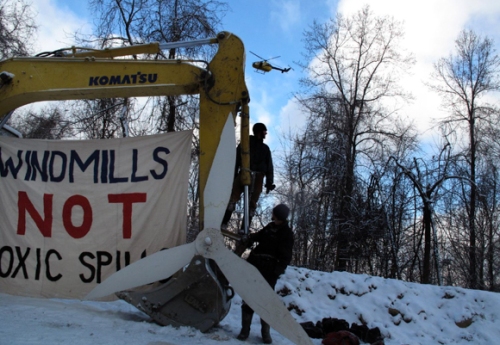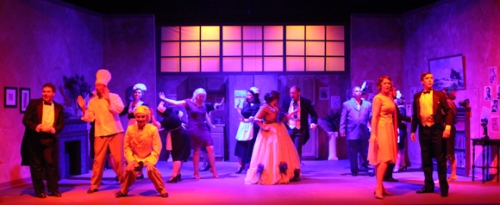Over the past two weeks, since the Presidential Inauguration, everyone I know is unsettled. No matter who they voted for. Perhaps that is the upside of the upset. Perhaps this is what we needed. Even though it doesn’t feel good or satisfying, perhaps these benefits are worth it?
- To be clear about how we feel on the issues.
- To dialogue with those we disagree with.
- For more people to take action to support what’s important to them.
- For people to share their money in support of the causes they care about.
- To be reminded that our point of view isn’t the only point of view.

By Chad A. Stevens, milesfrommaybe Productions. From the film Overburden about Lorelei Scarbro who became a community organizer in the campaign to build an industrial wind farm along the ridges of mountain whose coal mine killed her husband.
I’ve used my work as a teacher, writer, and now as a marketing strategist to support the causes–and the people and businesses–I believe in.
I worked in Superfund clean up as a US EPA contractor because I believe in clean air and water and healthy ecosystems for people, for living things, and for the future of the planet.

By Chad A. Stevens, milesfrommaybe Productions. From the documentary flm Overburden. Nonviolent protest on Coal River Mountain on a mountaintop removal preparation site.
I managed chemistry laboratories and taught environmental science at a State University training the future scientists, policy-makers, and planners that will lead us to problem-solving in future generations.
I worked in special education for little pay for years because I believe in the impact public school can have on the lives of special needs children.
I write about theater, music, the arts, environmental innovation, and buying local and supporting local businesses because I believe in their value–for myself, for my family, and for our communities.

Bellingham Theatre Guild’s 2015 production of The Drowsy Chaperone.
My writing, my communication, and how I approach them are my activism. Perhaps all that’s going on in the world right now is a sign. A sign that its time to wake up, look outside ourselves, and find our own activism.
If we don’t hear the call, we just might lose the freedoms we’ve been taking for granted, the privileges given to us by the activists who came before us. Those activists were every day people. Writers, lawyers, teachers, cooks, students, parents, preachers, nurses, policemen, and even politicians. They are us and we are them.
 Another upside: the action is not hard to find anymore. Don’t be overwhelmed. Choose your cause and pledge to yourself to do some small things. Now and from now on. Add your voice. We can do little alone, but together we are mighty.
Another upside: the action is not hard to find anymore. Don’t be overwhelmed. Choose your cause and pledge to yourself to do some small things. Now and from now on. Add your voice. We can do little alone, but together we are mighty.
Here are seven articles I’ve written so far in 2017 in support of the arts and human rights. Take a look, appreciate the arts, the environment, the rights you enjoy. Then find your activism and get involved.
Mount Baker Theatre Resident Ghost Judy is Blushing in Anticipation of The Irish Rovers and We Banjo 3 at Whatcomtalk.com
Resident Ghost Judy Can’t Wait for Mount Baker Theatre Education Shows at Whatcomtalk.com
Bellingham Human Rights Film Festival Explores Critical Issues at Bellingham Whatcom County Tourism Insider Blogs
Art, Nature, History, and Fun at Whatcom Museum in Bellingham at Bellingham Whatcom County Tourism Insider Blogs
Celebrate the Tribute Act at Mount Baker Theater at Whatcomtalk.com
Join Whatcom County’s Vibrant Poetry Scene at Bellingham Whatcom County Tourism Insider Blogs
Appreciating the Poetry of Whatcom County at WhatcomTalk.com

 It was a joy to interview an intelligent, articulate, confident, resourceful bunch of Sehome High School students for my most
It was a joy to interview an intelligent, articulate, confident, resourceful bunch of Sehome High School students for my most  and his award-winning ultra-green home. There’s something to be admired when someone lives their values every day, going off the grid in an environmentally-conscious way in order to test the limits of possibility and inspire others. Check out my
and his award-winning ultra-green home. There’s something to be admired when someone lives their values every day, going off the grid in an environmentally-conscious way in order to test the limits of possibility and inspire others. Check out my 







